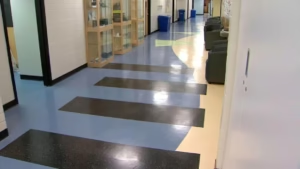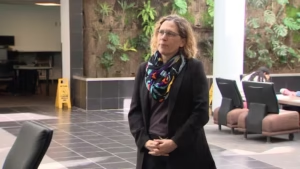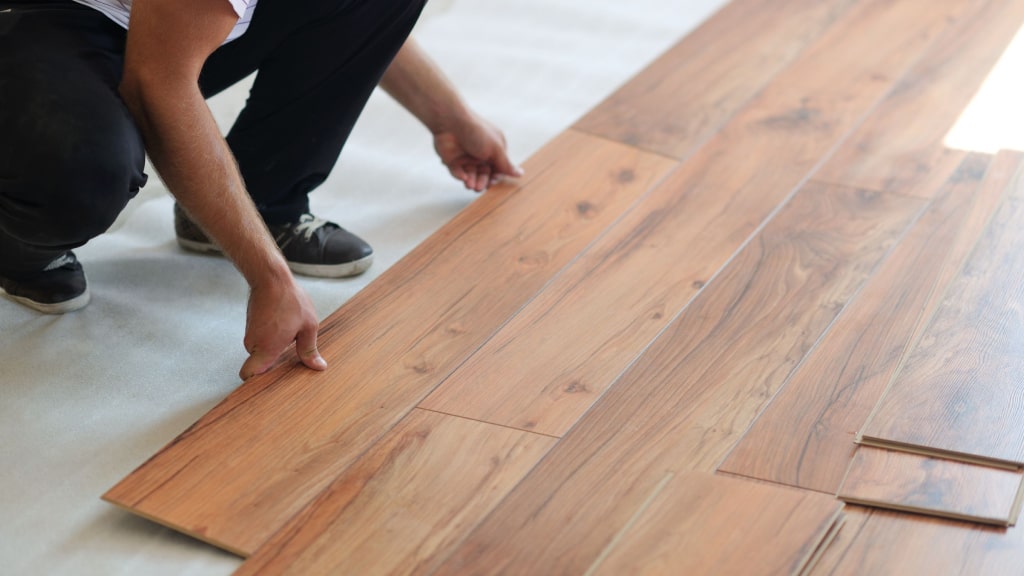Province says it plans to enact the ‘built environment’ standard in 2024
Down the hall from Prof. Linda Campbell’s office in the Science Building at Saint Mary’s University, there’s a floor tile pattern of blue waves and green triangles overlaid by large black rectangles.
Many people walk by without a second thought. But Campbell has watched some people stop at the black rectangles and stand stock-still.
“They pause. They want to make sure, hey, is this flat?” she said.
Down the hall from Prof. Linda Campbell’s office in the Science Building at Saint Mary’s University, there’s a floor tile pattern of blue waves and green triangles overlaid by large black rectangles.
Many people walk by without a second thought. But Campbell has watched some people stop at the black rectangles and stand stock-still.
“They pause. They want to make sure, hey, is this flat?” she said.

That flooring is just one of thousands of places in Nova Scotia where public institutions know upgrades are needed to meet the province’s Accessibility Act goals in the built environment.
For some institutions, the cost of these upgrades could stretch into the millions, and while some provincial funding is available to help, it may not be enough.
Campbell takes note when design excludes people, and agreed to show CBC some examples in her own work area. She is deaf, and CBC spoke with her with the assistance of an American Sign Language interpreter.
Some of the many challenges include accessible washrooms, the design and placement of wayfinding signs, counter heights, elevators and the placement of door-opening buttons.
To Campbell, accessibility is reflected in the six provincial standards underway to improve the built environment, education, employment, goods and services, information and communications and public transportation.
“In a beautiful world, accessible by 2030, it means everyone can be included in the decision-making, the work, in school and the environment, and they can do what they want, when they want,” she said.
Measuring everything
In 2021, most of the provincial universities and the Nova Scotia Community College jointly hired an architect to conduct detailed “accessibility audits” of their campuses, to get baseline information and high-level cost estimates on improvements.
Architect Anne Sinclair compared the buildings to the proposed provincial-built environment standard. She also uses the Rick Hansen Foundation and Canadian Standards Association accessible design guidelines.
“We take photographs. We measure everything — from height of reception desks to urinals,” Sinclair told CBC News. “Not the most glorious part of the project, but urinals are also really important to some people.”
Sinclair has years of experience conducting these audits and said she has never found a building without a single accessibility issue, even in newer facilities.
“And still, they’re not quite compliant sometimes,” she said, “which is very upsetting.”
Universities seek cost estimates
Using access to information laws, CBC obtained the accessibility audit Sinclair delivered to SMU.
The audit covered 15 buildings and the cost estimates for each building ranged between $117,000 and $742,000. In three groups of buildings, the estimate was more than $500,000: the student union building, Loyola residence and Rice and Vanier residence.
Sinclair told CBC she works with an experienced cost consultant to deliver estimates, but her audits shouldn’t be read as a final total.
SMU declined to do an interview with CBC, but it’s far from the only institution with a list of costly upgrades.

Sinclair said the rough university estimates were higher than she expected.
“I was somewhat surprised and I think most of the clients were very surprised at the sheer numbers,” she said.
Sinclair said work is happening on the 2030 goals, but often it’s happening in the background.
“All this prep work is being done. There’s no way you could start a project in a university or even in your own home if you didn’t do this prep work,” she said.
Saint Mary’s is not alone: all universities are doing this work, along with municipalities, libraries, government buildings and many other public and private institutions.
Dalhousie University did its own accessibility audit in 2018, and by 2022 released its plan for change. The plan acknowledged that “existing funding streams will not support the entirety of barrier removal,” and said it was working on new funding models.
By the 2023-24 fiscal year, Dalhousie’s operating budget included a new amount: $4 million for “accessibility and code modifications,” a portion of which was set aside to comply with the Accessibility Act.
However, in Dalhousie’s budget passed in April 2024, it had to find savings to bridge a $20-million budget gap.
The allocation for accessibility and code modification was reduced to $1 million. The budget stated the university could still meet all its existing projects in progress.
No one from Dalhousie was available to do an interview, but in a statement the university told CBC that “difficult choices” were required to balance its most recent budget plan.




